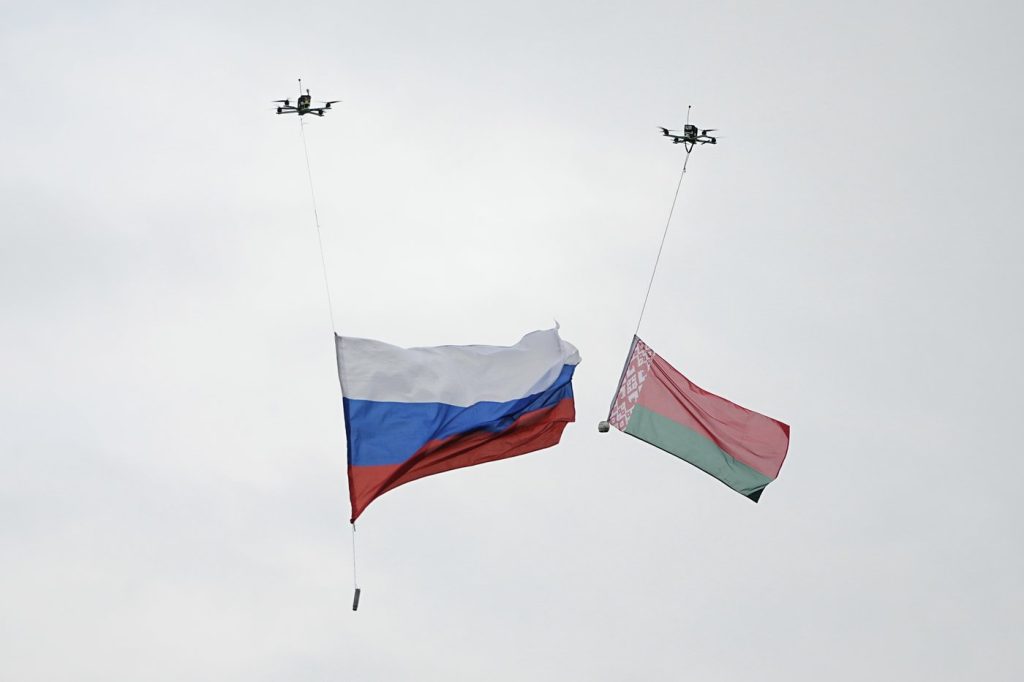World
Russia Displays Military Strength, Heightening NATO Tensions

Russia’s recent military exercises, conducted in collaboration with Belarus, have intensified tensions with NATO, particularly following a series of provocative actions that included incursions into Polish airspace. These developments come on the heels of the unsuccessful U.S.-Russia summit in Alaska, aimed at addressing the ongoing conflict in Ukraine.
During the large-scale maneuvers known as “Zapad 2025,” Russia showcased its conventional and nuclear capabilities, involving thousands of troops, combat vehicles, and nuclear-capable bombers. The exercises, occurring just after Russian drones flew into Polish airspace, raised alarms among NATO member states, particularly Poland, Latvia, and Lithuania, which border Belarus. Polish Prime Minister Donald Tusk described the drone incursions as a “provocation” that brought the region closer to potential conflict.
NATO Secretary-General Mark Rutte responded by announcing measures to enhance air defenses along the alliance’s eastern flank. He highlighted the threat posed not only to Poland but also to other nations such as Romania, Estonia, Latvia, and Lithuania, which have experienced similar airspace violations.
Nuclear Posturing and Military Doctrine
The timing of these drills coincides with the anniversary of President Vladimir Putin‘s revision of Russia’s nuclear doctrine. This policy asserts that any conventional attack on Russia, especially if supported by a nuclear power, could be interpreted as a joint attack, significantly lowering the threshold for nuclear weapon usage. The doctrine also extends Russia’s nuclear umbrella over Belarus, where battlefield nuclear weapons have reportedly been deployed.
The Oreshnik missile, a new intermediate-range ballistic missile, has become a focal point in these military exercises. Putin claimed that the Oreshnik could reach its targets at speeds of up to Mach 10, making it nearly impossible to intercept. He noted that the missile could strike key locations in Poland within 11 minutes and NATO headquarters in Brussels within 17 minutes, raising concerns about its potential use against Ukraine and its allies.
Russian state media reported that the maneuvers included planning for nuclear weapon deployment, a point underscored by Belarusian Defense Minister Viktor Khrenin. There is ongoing ambiguity regarding the control of the Oreshnik missiles, with conflicting statements from Russian and Belarusian officials about who would ultimately oversee their use.
Historical Context and Regional Implications
The current military posture echoes Cold War-era dynamics, as Belarus serves as a strategic location for Russian nuclear capabilities. Analysts note that Belarus was once a significant base for Soviet nuclear weapons, and its current status as a host for Russian tactical nuclear weapons raises alarms in Eastern Europe.
Military analysts like Alexander Alesin have expressed concerns that the deployment of these weapons transforms Belarus into a “balcony looming over the West,” posing threats to the Baltic states and Poland. The return of Russian tactical nuclear weapons to Belarus signals a shift in the regional security landscape, reminiscent of past tensions that characterized the Cold War.
The situation remains fluid as NATO continues to monitor Russia’s military activities closely. The ongoing conflict in Ukraine, combined with the recent military drills, underscores the precarious nature of European security and the urgent need for diplomatic efforts to mitigate rising tensions. As NATO fortifies its defenses, the international community watches closely, aware that the implications of these actions extend far beyond the borders of Eastern Europe.
-

 Science3 months ago
Science3 months agoToyoake City Proposes Daily Two-Hour Smartphone Use Limit
-

 Top Stories3 months ago
Top Stories3 months agoPedestrian Fatally Injured in Esquimalt Collision on August 14
-

 Health3 months ago
Health3 months agoB.C. Review Reveals Urgent Need for Rare-Disease Drug Reforms
-

 Technology3 months ago
Technology3 months agoDark Adventure Game “Bye Sweet Carole” Set for October Release
-

 World3 months ago
World3 months agoJimmy Lai’s Defense Challenges Charges Under National Security Law
-

 Lifestyle3 months ago
Lifestyle3 months agoVictoria’s Pop-Up Shop Shines Light on B.C.’s Wolf Cull
-

 Technology3 months ago
Technology3 months agoKonami Revives Iconic Metal Gear Solid Delta Ahead of Release
-

 Technology3 months ago
Technology3 months agoApple Expands Self-Service Repair Program to Canada
-

 Technology3 months ago
Technology3 months agoSnapmaker U1 Color 3D Printer Redefines Speed and Sustainability
-

 Technology3 months ago
Technology3 months agoAION Folding Knife: Redefining EDC Design with Premium Materials
-

 Business3 months ago
Business3 months agoGordon Murray Automotive Unveils S1 LM and Le Mans GTR at Monterey
-

 Technology3 months ago
Technology3 months agoSolve Today’s Wordle Challenge: Hints and Answer for August 19









